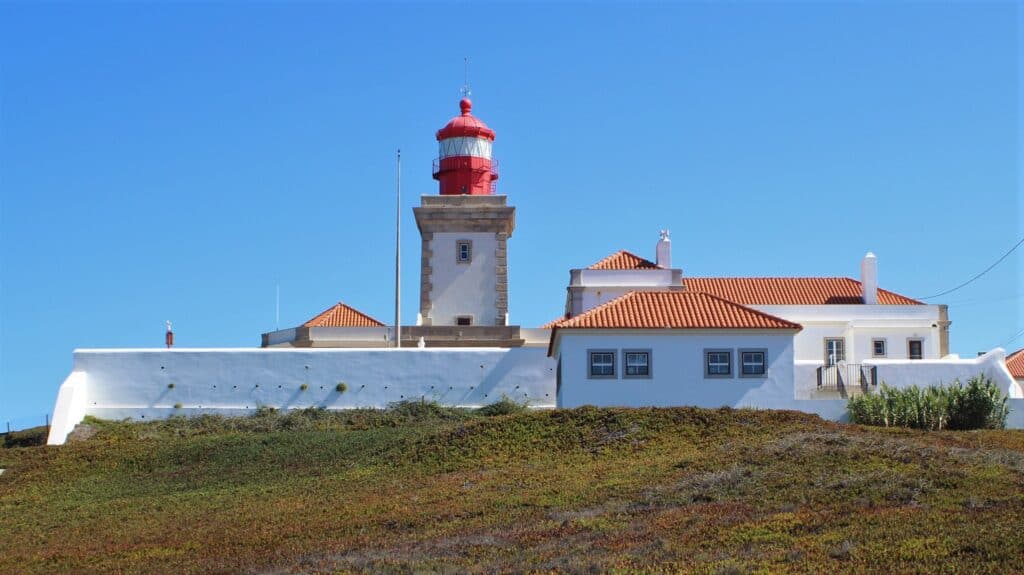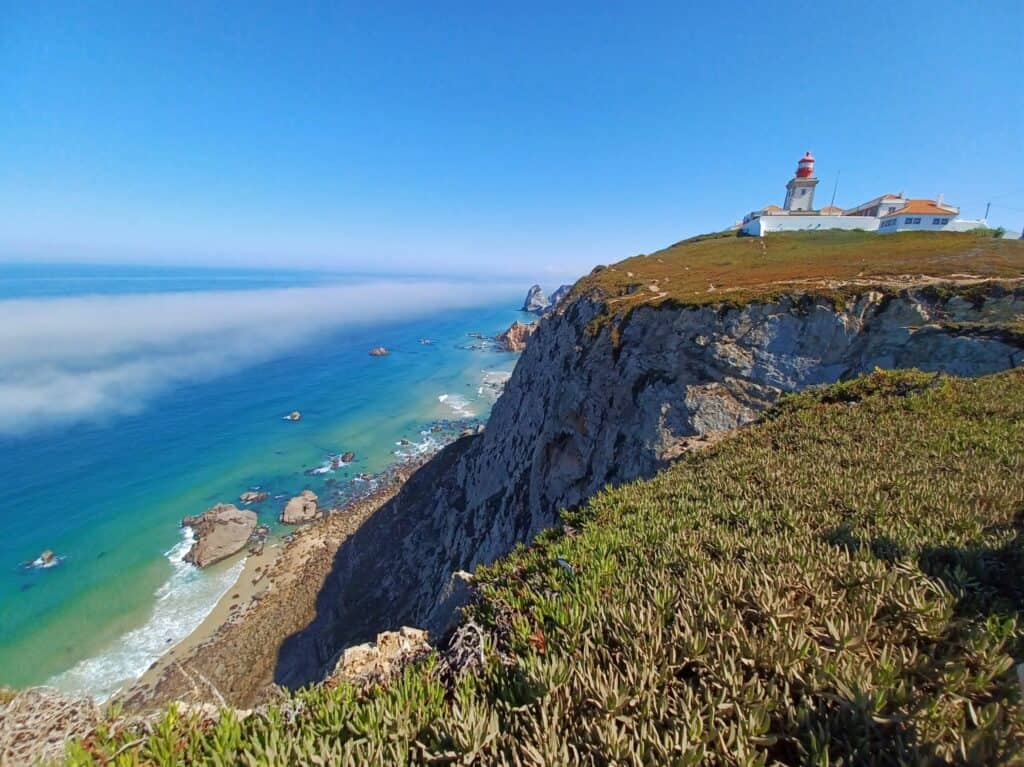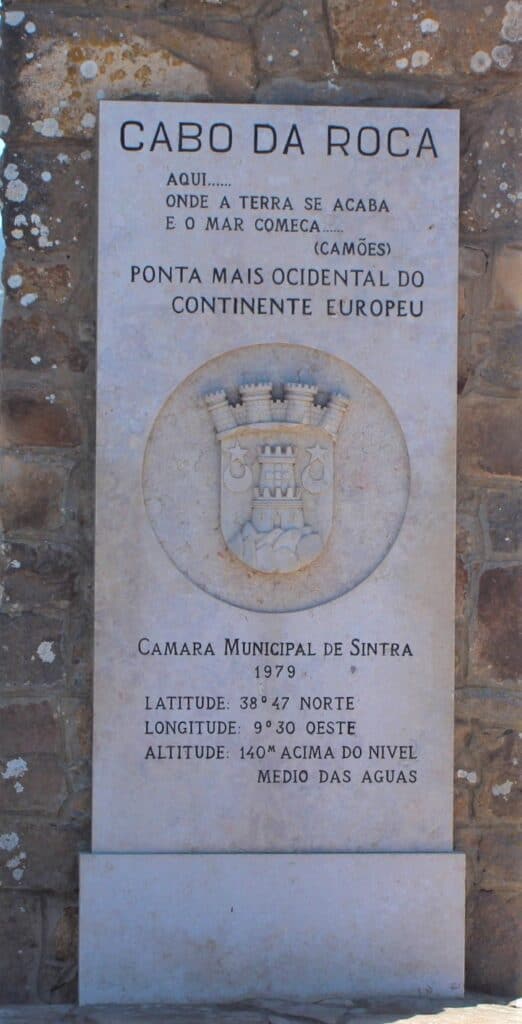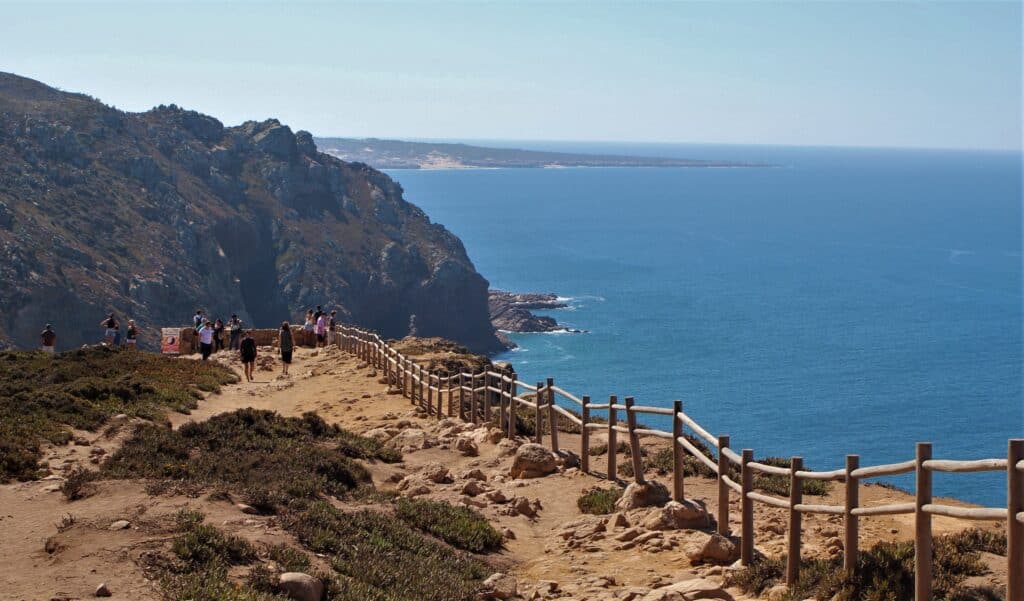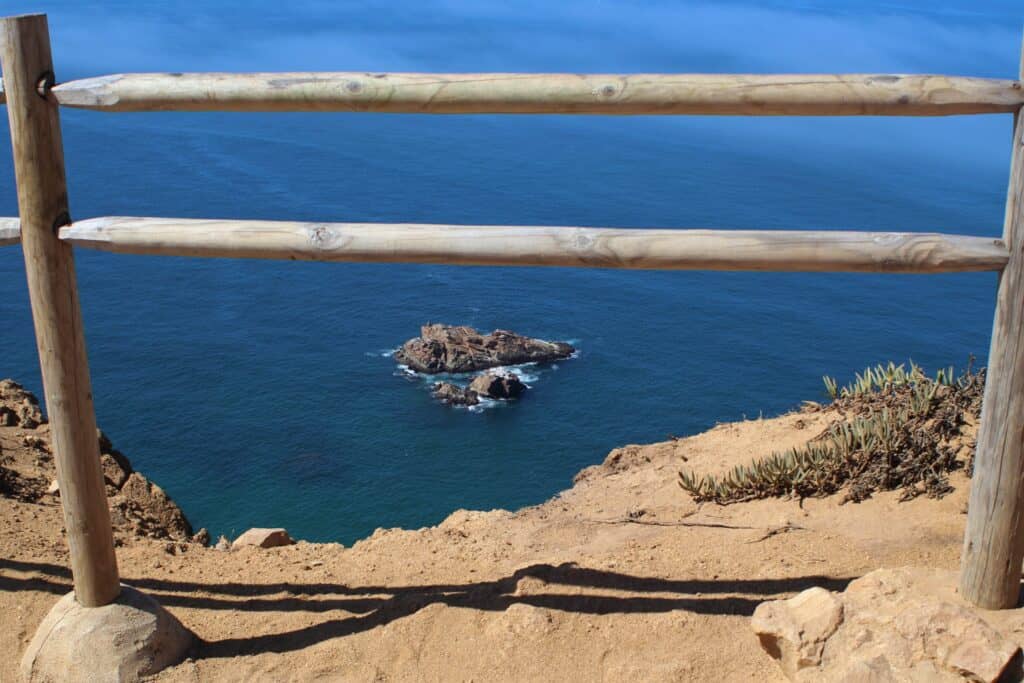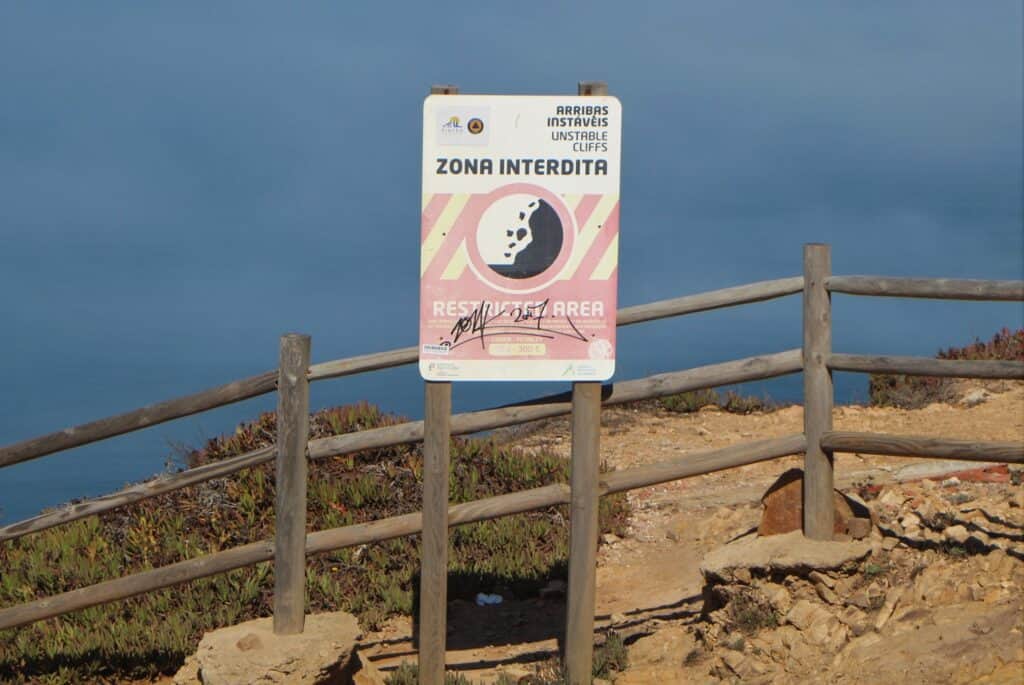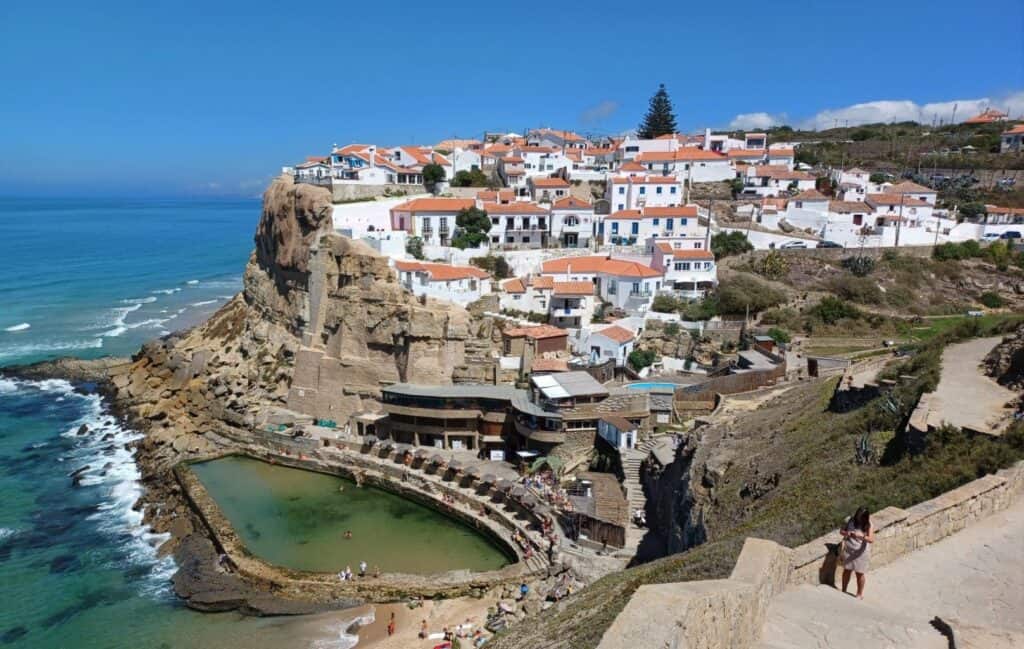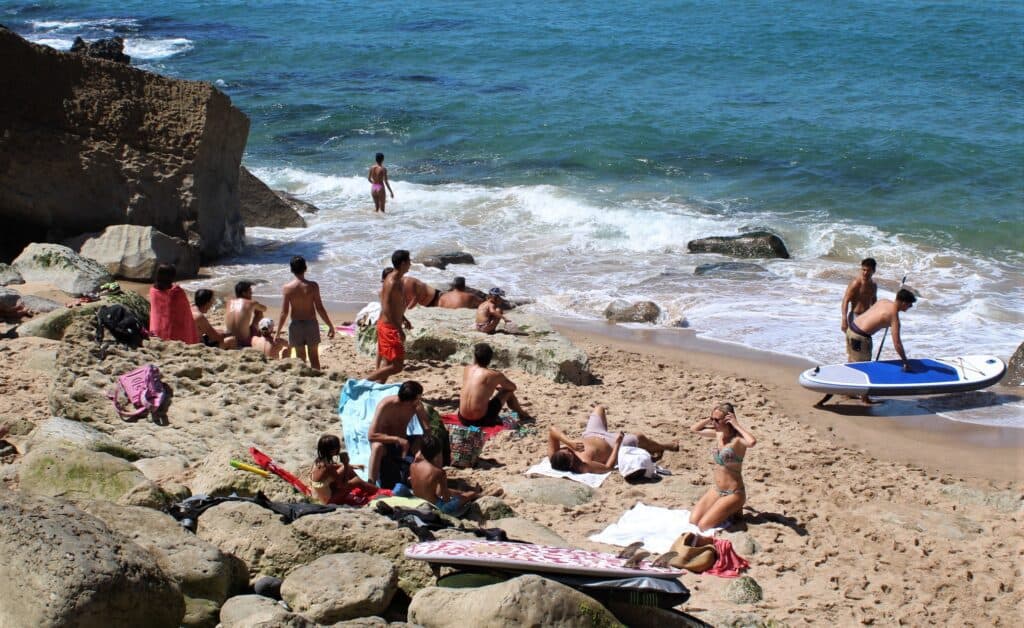Continental Europe’s westernmost point is marked with a monument on the windy cape.
By far, the biggest tourist attraction in the Colares parish (part of the Sintra municipality) is Cabo da Roca.
The first thing you’re likely to see as you round the bend and Cabo da Roca comes into view is the Farol do Cabo da Roca (Cabo da Roca Lighthouse). Beginning operation in 1772, the Cabo da Roca Lighthouse is the third oldest lighthouse on the Portuguese coast.
The lighthouse is still used for navigation and has 3 lighthouse keepers working on site. The light itself is only about 70 feet above ground level, but because of the massive cliffs, the lighthouse is actually over 500 feet above sea level. From this commanding position, the beacon can be seen up to 30 miles away.
As this is a working lighthouse, it is not open to the public. But, it’s easy to get great photos of the lighthouse from the Cabo da Roca grounds. On occasion, the lighthouse is open to tour. However, as of this writing, it is closed indefinitely due to renovation work.
The point itself is a rocky cape; part of the Sintra mountain range. Visitors love the dramatic scenery with cliffs plunging hundreds and hundreds of feet into the Atlantic Ocean below.
There’s a striking stone marker where people take selfies for Instagram. On the marker is a poem by the famous Portuguese poet Camões that says ““here…where the land ends and the sea begins…” You’ll also see the longitude and latitude coordinates of Cabo da Roca. If you want a souvenir of your trip, head to the nearby tourist office and get a certificate with you name on it showing that you have been to the westernmost point in continental Europe.
From there, you can walk down a short trail for more spectacular scenery.
There are tiny beaches along the coast, but remember, you have to go down, down, down to get to them.
The Praia da Ursa is gorgeous. You can take a trail near Cabo da Roca to get there. It’s important to bring good shoes because this is a hiking trail with over 300 feet of elevation change. And, don’t forget, you’ll have to make the climb back up!
Also, Praia da Ursa is a tiny beach with no facilities or lifeguards. The water is cold and the currents are very, very strong. Swimming is strongly discouraged. Finally, Praia da Ursa, because of its remoteness, is an unofficial nude beach. If that sort of thing bothers you, maybe find another place.
Getting to Cabo da Roca
Your visit to Cabo da Roca will probably only be an hour or two (unless you spend the day at the beach). So, it’s advisable to combine a trip to the cape with some other sites.
One option is to pair Cabo da Roca with Sintra. If you get an early start, you can beat the crowds to the cape. Or, you can see the spectacular sunsets at Cabo da Roca by making it end of your journey. Either way, Sintra can be a tiring trip with the crowds of the Pena Palace and the climbing at the Moorish Castle. I think it’s best to make Sintra a full day trip in itself (or even spend two days, there’s so much to see!)

The train is an easy way to get from Lisbon to Sintra. Get the Sintra train at the Rossio or Oriente stations. The trip lasts about 40 minutes and Sintra is the last stop so you can’t get lost.
Or, you can take an Uber directly to Sintra. Just don’t take a car. Driving and parking in Sintra is a nightmare.
If you’re into wine, the best way to see Cabo da Roca is see it as part of a trip to nearby Colares.
Visiting the Colares Adega Regional de Colares (Regional de Colares Winery) is a highlight. You can also visit the unique vineyards of Colares where grapevines grow in land so sandy it looks like they are planted on the beach.

Near Colares is one of the most stunning little seaside towns in Portugal. Azenhas do Mar clings to the rocks above the ocean. Walk to the water and you’ll find a tiny beach and a tidal pool with a stone wall. There’s also a lovely little beach bar where you can get a beer and a snack.
A car might be a good idea if going to Colares and Cabo da Roca. But, you can get there by public transportation.
Take the train from Lisbon to Sintra and then transfer to the 403 bus. When you get to Colares, it’s a short walk to the Regional de Colares Winery.
The 403 also continues to Cabo da Roca. From Colares it’s about another 15 minutes to Cabo da Roca.
From Colares to Azenhas do Mar it’s about an hour walk or a 10 minute car ride. You can also take the 441 bus from Colares (about 20-25 minute ride).
About the Author

Brent Petersen is the Editor-in-Chief of Destination Eat Drink. He currently resides in Setubal, Portugal. Brent has written the novel “Truffle Hunt” (Eckhartz Press) and the short story collection “That Bird.” He’s also written dozens of foodie travel guides to cities around the world on Destination Eat Drink, including in-depth eating and drinking guides to Lisbon, Porto, Sintra, Monsaraz, and Evora in Portugal. Brent’s podcast, also called Destination Eat Drink, is available on all major podcasting platforms and is distributed by the Radio Misfits Podcast Network.

